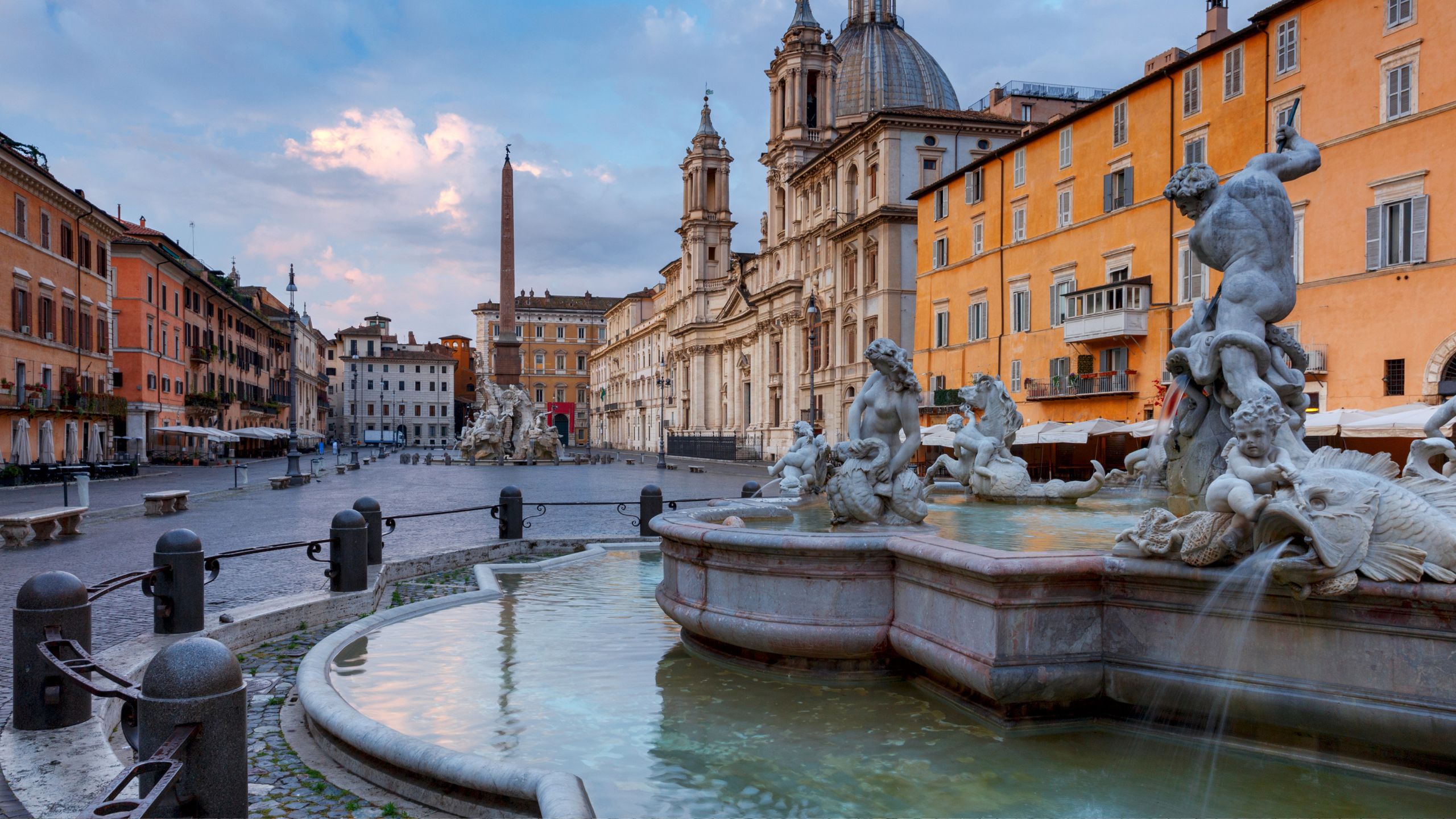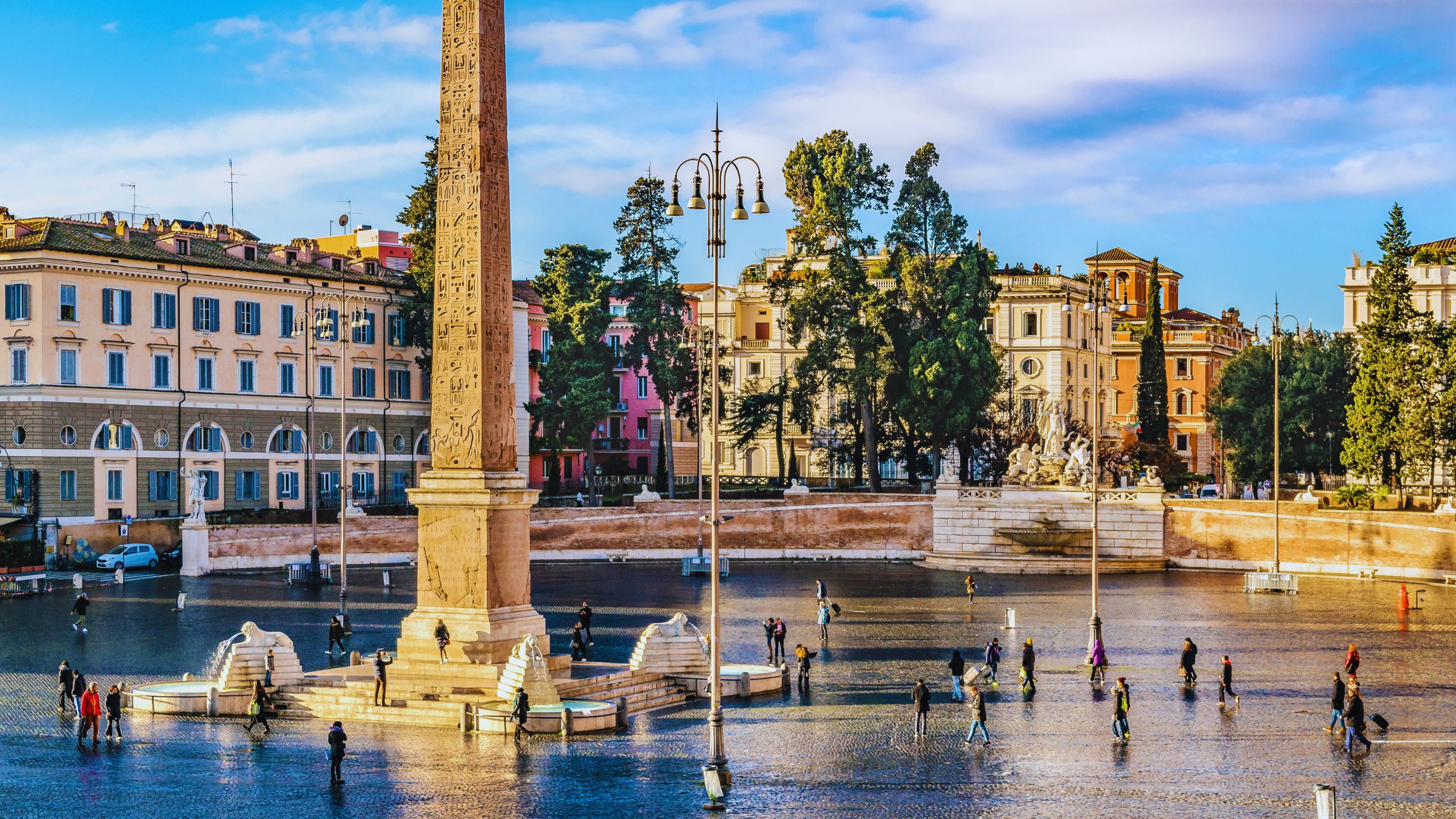A Stroll through Rome: The Magnificence of the Fountains in Piazza Navona
In the very heart of Rome's historic center, nestled among ancient alleys, noble palaces, and iconic monuments, lies one of the city’s most beloved and visited squares: Piazza Navona. It’s a place that captivates at first glance—broad, harmonious, always lively yet never chaotic. In every season, this is a space to explore slowly, letting your eyes linger on its many wonders. The square—entirely pedestrian—is a daily attraction for thousands of people, thanks to its unique atmosphere, elegant architecture, and above all, the monumental fountains that define its identity. Among Rome’s many piazzas, Piazza Navona stands out not only for its unusual oval shape, but also for the rich details that make it unforgettable to every visitor. To experience the essence of Roman beauty, history, and charm, this is a must-see destination—one of the most photographed and admired places in the entire city. This article will help you discover what makes this place so special and how to best enjoy it, even if it’s your first time in Rome.
The History of the Square
Piazza Navona was built on the ruins of the ancient Stadium of Domitian, constructed in 86 AD to host athletic competitions and public spectacles. The square has retained its oval shape because it faithfully follows the outline of the original stadium, instantly transporting those who visit back in time. Over the centuries, the space underwent major transformations. In the Middle Ages, it became a local market square. Then, during the 16th and 17th centuries, it was transformed into a monumental square thanks to the powerful Pamphilj family, the papacy of Innocent X, and the genius of some of the most prominent Baroque architects, such as Gian Lorenzo Bernini and Francesco Borromini. Their influence shaped many of the landmarks that define the piazza today, including Palazzo Pamphilj, Sant’Agnese in Agone, and the iconic Fountain of the Four Rivers—a masterpiece that makes this square recognizable around the world.
Today: A Living Stage of History and Beauty
Today, Piazza Navona is a vibrant meeting point between history, architecture, and everyday life. At its center are three spectacular fountains. The most iconic is the Fountain of the Four Rivers (1651), created by Bernini, representing the four great rivers of the world—the Nile, the Ganges, the Danube, and the Río de la Plata—surmounted by an ancient Egyptian obelisk. To the south stands the Fountain of the Moor, adorned with Tritons and a muscular figure battling a dolphin. At the northern end, the Fountain of Neptune shows the sea god surrounded by playful marine creatures. These fountains are not mere decorations: they tell the story of Rome’s deep relationship with water, a key element of the city since the days of its ancient aqueducts. Water—symbol of life and abundance—takes center stage through sculptures that merge art and nature, inviting visitors to reflect on the millennia of history flowing beneath their feet. Each fountain tells its own tale, enriching the square with its symbolic layers and making Piazza Navona a perfect harmony of past and present.
Events, Curiosities, and Local Flavors
Throughout the year, Piazza Navona hosts events that attract visitors from all over the world. One of the most popular is the Christmas market, featuring colorful stalls, sweets, children's rides, and handmade crafts that fill the square with joy and irresistible aromas. On sunny days, especially in spring and summer, the square becomes a favorite spot for street performers, caricaturists, painters, and musicians. While sipping coffee or strolling between fountains, you’ll often see artists sketching portraits or displaying their creations. This daily artistic presence keeps the square authentic and lively, making it not just a tourist site, but an open-air hub of creativity. There are also intriguing stories and legends surrounding the square. One popular tale speaks of the artistic rivalry between Bernini and Borromini. According to legend, one of the statues on Bernini’s Fountain of the Four Rivers is shielding its eyes, unable to bear the sight of Borromini’s façade of Sant’Agnese in Agone—though in truth, the statue predates the church. Perhaps the most fascinating tradition tied to the square is the “flooding of Piazza Navona”, which began in the 17th century and lasted until the late 1800s. During the hottest summer weekends, the drains of the fountains were sealed, allowing water to pool across the square’s concave surface, creating a temporary artificial lake where people would stroll, cool off, and enjoy theatrical performances. This unique spectacle became a beloved form of summer entertainment for Romans of the time. And if you’re in search of something delicious, you’ll find artisan gelato shops and authentic Roman trattorias just a few steps away from the square’s center. Escape the tourist crowds and treat yourself to classics like cacio e pepe, amatriciana, or a refreshing grattachecca (Roman-style shaved ice).
How to Get to Piazza Navona
Whether you're coming from nearby or from across the city, Piazza Navona is easy to reach on foot. From metro stops like Barberini or Spagna, it’s a pleasant 10–15-minute walk through charming historic streets like Via del Corso, famous for its blend of history and modernity—and a favorite destination for shopping. You can also reach the square by bus. Lines 46, 62, and 64 stop near Piazza Venezia or Corso Rinascimento, from which you can walk the last stretch. If you’re already exploring the Pantheon or Campo de’ Fiori, a short stroll through Rome’s winding alleys will lead you straight into the square’s warm, timeless atmosphere. Driving, however, is not recommended, as the area falls within the city’s Limited Traffic Zone (ZTL). It’s better to park outside and continue by foot or taxi. Piazza Navona perfectly embodies what makes Rome unique: history visible at every turn, art integrated into public life, and a blend of daily experience with cultural heritage. You don’t need a plan to enjoy it—just walk, look, and pause. Every detail—from its majestic fountains and historic buildings to the sounds of the square and the rhythm of the passersby—comes together to create an unforgettable experience. Whether you’re a first-time visitor or a lifelong Roman, Piazza Navona always has something new to offer, something deeply authentic and memorable.




